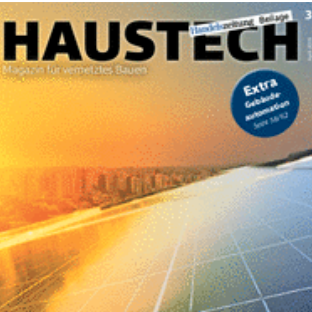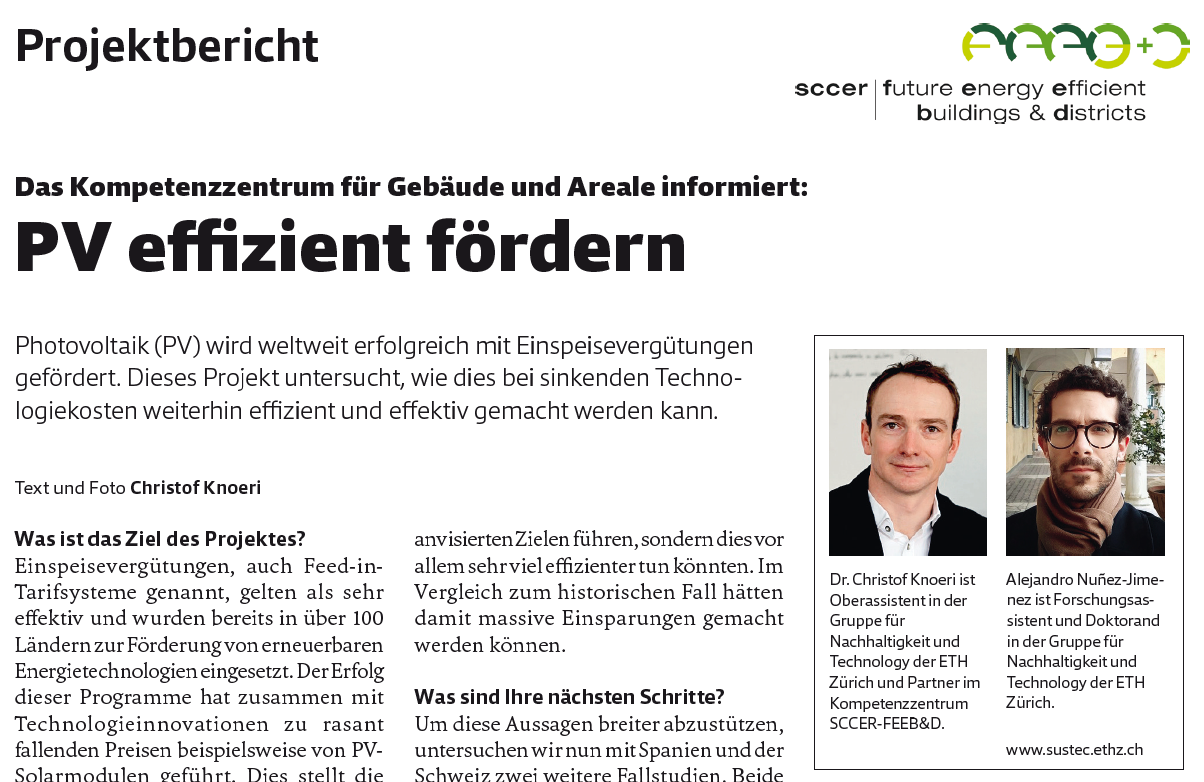SusTec research in the media
Swiss industry journal Haustech highlights project on efficient policies for solar photovoltaics promotion.

On its April 2019 issue, the construction industry magazine Download Haustech highlighted an ongoing research project at SusTec. The publication echoes a SusTec project that explores advanced policy designs for a cost-efficient support of clean energy technologies.
The magazine covers research that focuses on policies based on economic incentives. Economic incentives, such as investment subsidies or feed-in tariffs, have proven effective for accelerating the diffusion of energy technologies in the past. However, setting the right level of incentives and maintaining it over several years or decades remains a challenge for policymakers. Although this difficulty sometimes goes unnoticed, it is particularly dangerous when policies target technologies whose costs fall rapidly as they are deployed on a larger scale – i.e. technologies with high learning rates such as solar photovoltaic (PV).
Solar PV prices have fallen dramatically in the past decades worldwide, and, in its path, have exposed the weaknesses in the design of deployment policies. Among the many examples, the feed-in tariff policy inaugurated in Switzerland in 2009 was so generous and decreased so slowly that it immediately created a waiting list with thousands of solar adopters that external page outlasted the own policy. If the policy design problem remains unaddressed, the risk of high policy costs will haunt the implementation of new policies for technologies that are essential for decarbonizing energy consumption, such as energy storage or electric vehicles.
In order to find a solution for this problem, project leaders, Dr. Christof Knoeri and Alejandro Nuñez-Jimenez, developed a sophisticated computer model that simulates the behavior of electricity consumers. The agent-based model reproduces the decision-making mechanisms of residential, commercial and large-scale adopters of solar PV. The simulations then compare alternatives ways of adjusting a feed-in tariff for solar photovoltaics with the goal of finding the design that results in the most cost-efficient policy. Two upcoming scientific publications will provide further details on the designs tested for several European countries.
The article in Haustech is part of a series that reports on recent work from the external page SCCER in Future Energy Efficient Buildings and Districts (FEEBD). The publication centered its number for April about solar energy, including the participation of industry leaders in Switzerland – such as external page Roger Nordmann from external page Swisssolar – as well as part of our most recent insights on policies for renewable energies.
